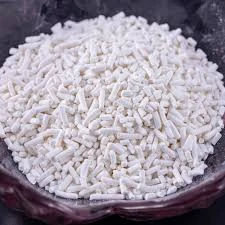
dmds chemical
Understanding DMDS Chemical Applications and Importance
Dimethyl disulfide (DMDS) is a compound with a distinctive chemical structure, characterized by its two methyl groups and a pair of sulfur atoms. This colorless liquid, with its strong odor reminiscent of rotten eggs, plays a significant role in various industrial applications. Its multi-faceted properties make it an essential compound in the fields of agriculture, petrochemicals, and environmental remediation.
Chemical Properties and Structure
DMDS, or dimethyl disulfide, has the formula C2H6S2. Its molecular structure consists of two methyl groups attached to a disulfide bond. This unique configuration leads to various chemical reactions, including oxidation and reduction processes. DMDS is known for its high volatility and reactivity, which are critical in its functional applications.
Industrial Applications
1. Agricultural Uses One of the primary applications of DMDS is in agriculture, where it is used as a soil fumigant. It effectively controls pests and pathogens in the soil, enhancing crop yield and quality. DMDS is particularly valued for its ability to target a wide range of soil-borne diseases, making it an essential part of integrated pest management strategies.
2. Petrochemical Industry In the petrochemical sector, DMDS serves as a valuable additive. It is employed in the production of certain fuels and lubricants, where it acts as a sulfur donor in various hydrodesulfurization processes. This functionality is vital for reducing sulfur content in fuels, adhering to increasingly stringent environmental regulations concerning emissions.
3. Environmental Application DMDS is also being explored for its potential in environmental remediation. Its ability to react with heavy metals and other pollutants makes it suitable for treating contaminated soils and groundwater. Research is ongoing to understand the full extent of its capabilities and to develop effective remediation strategies using DMDS.
dmds chemical

4. Chemical Synthesis DMDS is employed as a reagent in organic synthesis. It provides a source of sulfur in the formation of sulfur-containing compounds, which are important in pharmaceutical and chemical research. The ability to introduce sulfur into organic molecules using DMDS expands the toolkit available to chemists for developing new compounds with desired properties.
Health and Safety Considerations
While DMDS has numerous applications, it is important to note that it is classified as a hazardous chemical. Its inhalation or exposure can lead to irritation of the respiratory system and mucous membranes. As such, strict safety protocols must be implemented when handling DMDS in industrial settings. Proper ventilation, protective clothing, and adherence to safety guidelines are essential to minimizing health risks to workers.
Conclusion
In summary, dimethyl disulfide (DMDS) is a versatile chemical compound with significant implications across various industries. Its role as a soil fumigant, its applications in the petrochemical sector, and its potential in environmental remediation underscore its importance in modern industrial processes. Furthermore, its utility in chemical synthesis positions it as a valuable reagent in research and development.
Despite its benefits, the potential hazards associated with DMDS underline the need for careful handling and safety precautions. As industries continue to evolve, the demand for effective, environmentally friendly solutions like DMDS will likely grow, pointing to a bright future for this remarkable chemical.
In conclusion, the multifaceted applications of DMDS underscore its importance in contemporary industrial practices, making it a critical agent in agriculture, petrochemicals, and beyond. Understanding its properties and safe handling protocols will ensure its continued role in driving efficiency and effectiveness across various sectors. As research progresses, we may uncover even more innovative uses for DMDS, further solidifying its place in the chemical industry.
-
Understanding Synthetic Rubber OptionsNewsApr.27,2025
-
Trichloroisocyanuric Acid: Essential for Clean and Safe WaterNewsApr.27,2025
-
Sodium Dichloroisocyanurate: Key to Safe Water TreatmentNewsApr.27,2025
-
Sodium Acid Pyrophosphate: Essential in Modern Food ProcessingNewsApr.27,2025
-
Essential Water Treatment ChemicalsNewsApr.27,2025
-
Denatured Alcohol and Its Industrial UsesNewsApr.27,2025
-
The Versatile Uses of Sodium BicarbonateNewsApr.24,2025
Hebei Tenger Chemical Technology Co., Ltd. focuses on the chemical industry and is committed to the export service of chemical raw materials.
-

view more DiethanolisopropanolamineIn the ever-growing field of chemical solutions, diethanolisopropanolamine (DEIPA) stands out as a versatile and important compound. Due to its unique chemical structure and properties, DEIPA is of interest to various industries including construction, personal care, and agriculture. -

view more TriisopropanolamineTriisopropanolamine (TIPA) alkanol amine substance, is a kind of alcohol amine compound with amino and alcohol hydroxyl, and because of its molecules contains both amino and hydroxyl. -

view more Tetramethyl Thiuram DisulfideTetramethyl thiuram disulfide, also known as TMTD, is a white to light-yellow powder with a distinct sulfur-like odor. It is soluble in organic solvents such as benzene, acetone, and ethyl acetate, making it highly versatile for use in different formulations. TMTD is known for its excellent vulcanization acceleration properties, which makes it a key ingredient in the production of rubber products. Additionally, it acts as an effective fungicide and bactericide, making it valuable in agricultural applications. Its high purity and stability ensure consistent performance, making it a preferred choice for manufacturers across various industries.











